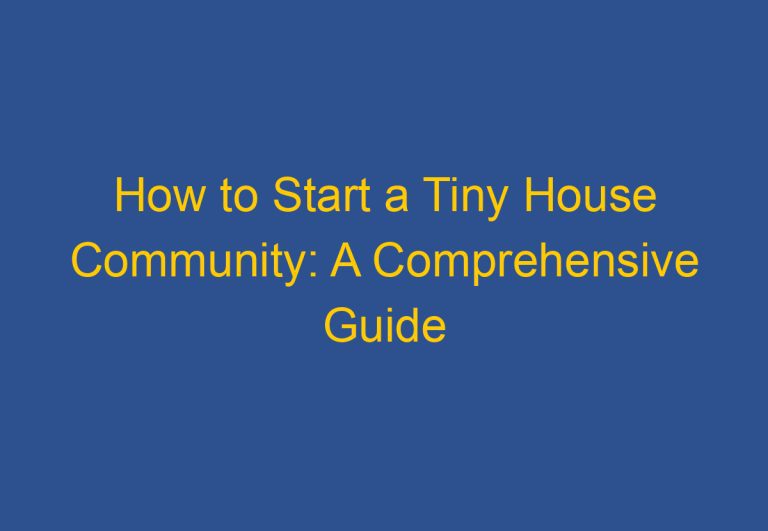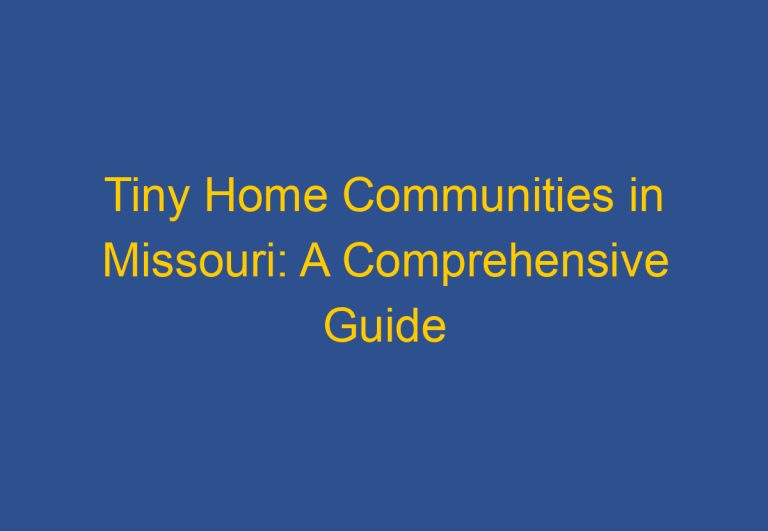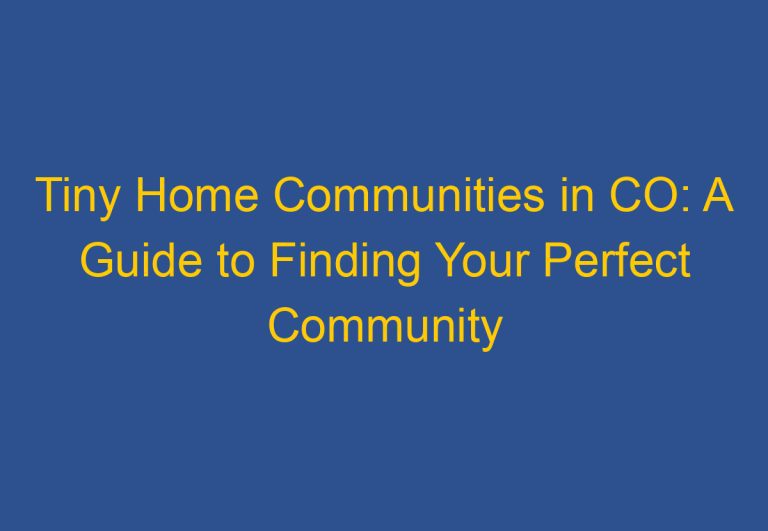Tiny Home Communities in MN: A Guide to Affordable Living in Minnesota
Minnesota is a state that is home to many tiny home communities. These communities offer residents a chance to live in a cozy and peaceful environment while still enjoying all the amenities of a traditional home. Tiny homes are a popular trend in Minnesota, and many people are choosing to downsize and live in these small, but comfortable, homes.
One of the most popular tiny home communities in Minnesota is Tiny Home Town in Grand Marais. This quaint town is situated on the shore of Lake Superior and offers residents a chance to live in a cozy and peaceful environment. The homes here range from 100 to 400 square feet, and the town has communal gardens and green spaces, as well as a community center and other amenities.
Another popular tiny home community in Minnesota is The Sanctuary Minnesota, located in Ogilvie. This community is situated on 80 acres of woods and trails and offers rental space for tiny homes as well as tiny homes for rent. The Sanctuary also coordinates events, workshops, and retreats, making it a great place to connect with others who share a passion for tiny living.
Exploring Tiny Home Communities in MN
Tiny homes are becoming increasingly popular in Minnesota as more people seek to downsize and live a simpler lifestyle. In this section, we’ll explore the benefits of tiny home living, popular tiny home communities in Minnesota, and legal and zoning considerations to keep in mind.
Benefits of Tiny Home Living
Living in a tiny home offers a variety of benefits, including lower costs, reduced carbon footprint, and a simpler, more minimalist lifestyle. Tiny homes are often more affordable than traditional homes, and they require less energy to heat and cool, reducing your carbon footprint. Additionally, tiny homes can help you simplify your life by eliminating excess clutter and focusing on what’s truly important.
Popular Tiny Home Communities
There are several popular tiny home communities in Minnesota, including The Sanctuary Minnesota, located in Ogilvie. This 80-acre property offers wooded trails and a peaceful setting for residents to enjoy. Other popular communities include St. Cloud, Duluth, Minneapolis, Rochester, and St. Paul.
Legal and Zoning Considerations
When considering a tiny home in Minnesota, it’s important to keep legal and zoning considerations in mind. Appendix Q of the International Residential Code provides guidelines for tiny homes, and many communities have zoning codes in place that dictate where tiny homes can be located. The Minnesota Department of Labor and Industry can provide additional information on regulations and requirements for tiny homes.
In conclusion, tiny home living offers a variety of benefits, and there are several popular communities in Minnesota to choose from. However, it’s important to keep legal and zoning considerations in mind when considering a tiny home.
Design and Amenities of Tiny Homes
Interior Design and Efficiency
Tiny homes are designed to maximize living space while minimizing the overall footprint of the home. The interior design of a tiny home is often unique and creative, with a focus on functionality and efficiency. Many tiny homes feature multi-purpose furniture and storage solutions, such as hidden compartments and built-in shelving. The use of natural light and open floor plans can also make a tiny home feel more spacious.
The kitchen and bathroom areas of a tiny home are typically compact but functional. They often feature space-saving appliances and fixtures, such as a combination washer/dryer unit and a compact refrigerator. Some tiny homes also include spa-like features such as a soaking tub or a rain shower.
Community Features and Services
Tiny home communities often offer a range of features and services to their residents. Community gardens and green spaces provide a place for residents to relax and connect with nature. Many communities also offer parking spaces for recreational vehicles (RVs) and boats, as well as access to nearby lakes and mountains for fishing and outdoor recreation.
Community amenities can also include shared spaces such as a bar or lounge area, a laundry facility, and a recreation center. Some communities may also offer luxury amenities such as a spa or fitness center.
In terms of safety, tiny homes are required to meet certain building codes and safety standards. This includes features such as emergency escape and rescue openings, as well as roof access windows and loft guards. The chassis of a tiny home is also designed to withstand the stresses of being transported, while the heating and duct systems are designed to be efficient and effective in a small space.
Overall, tiny homes offer a downsize in living space without sacrificing comfort or convenience. With creative interior design and a range of community features and services, tiny home living can be a comfortable and enjoyable way to live a simpler, more sustainable lifestyle.
Frequently Asked Questions
What are the zoning regulations for tiny home communities in Minnesota?
The zoning regulations for tiny home communities in Minnesota vary depending on the location. In general, tiny homes are subject to the same zoning regulations as traditional homes. However, some areas have specific regulations for tiny homes, such as minimum square footage requirements and restrictions on where they can be placed. It is important to research the zoning regulations in the specific area you are interested in before purchasing or building a tiny home.
How can one find tiny homes available for sale within Minnesota communities?
There are several ways to find tiny homes available for sale within Minnesota communities. One way is to search online listings for real estate agents who specialize in tiny homes. Another way is to look for tiny home communities on social media platforms or websites that cater to tiny home enthusiasts. Additionally, attending tiny home shows or events can provide opportunities to connect with builders and sellers of tiny homes.
Are there any tiny home communities in Minnesota that offer rental options?
Yes, there are some tiny home communities in Minnesota that offer rental options. These communities may offer both short-term and long-term rental options, depending on the community. It is important to research the specific community to determine if rental options are available.
What affordable tiny home communities exist in Minnesota?
There are several affordable tiny home communities in Minnesota. These communities may offer smaller lots or shared spaces to reduce costs. Some communities may also offer financing options or rent-to-own programs to make tiny home ownership more accessible. Researching different communities and comparing prices can help find an affordable option.
Can seniors find dedicated tiny home communities in Minnesota?
Yes, there are dedicated tiny home communities in Minnesota that cater to seniors. These communities may offer amenities such as healthcare services, transportation, and social activities specifically for seniors. It is important to research different communities to determine which ones are best suited for seniors.
What are the potential investment opportunities in tiny home communities in Minnesota?
Investing in a tiny home community in Minnesota can provide potential opportunities for rental income or appreciation in property value. However, it is important to carefully research the specific community and market conditions before making an investment. Factors such as location, zoning regulations, and demand for tiny homes can all impact the potential return on investment.










